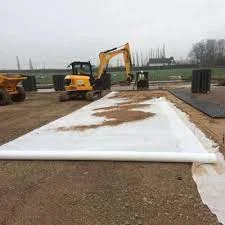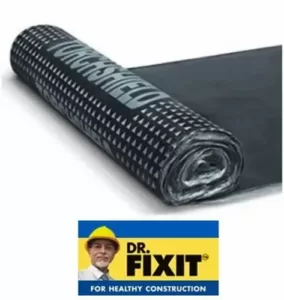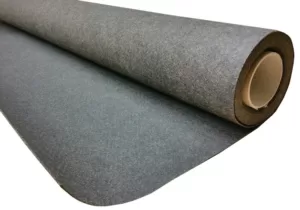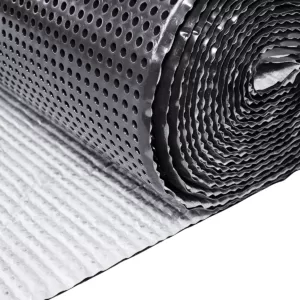
1.Anti-Root system | Root Barrier – importance
Anti-root systems and root barriers are important for several reasons; here are some technical reasons why anti-root systems and root barriers are important:
- Structural Integrity: The roots of trees and other vegetation can grow through small cracks in the roofing membrane, penetrate insulation layers, and eventually cause structural damage to the roof deck. Anti-root systems and root barriers can provide an additional layer of protection, preventing the roots from reaching the roofing membrane and causing damage.
- Waterproofing: Root intrusion can create pathways for water to penetrate into the roofing system, leading to leaks and water damage. Anti-root systems and root barriers help to prevent this by providing an impermeable layer that blocks the roots and prevents water from seeping into the roofing system.
- Chemical Resistance: The roots of some plants can release chemicals that can degrade roofing materials over time. Anti-root systems and root barriers are designed to resist these chemicals, ensuring that the roofing system remains intact and functional.
- Durability: Anti-root systems and root barriers are typically made of durable materials, such as rubber or plastic, that can withstand the elements and resist damage from roots over time. This ensures that the roofing system remains effective in protecting the building for many years.
- Compliance: In some areas, building codes and regulations require the use of anti-root systems and root barriers to protect the building structure. Installing these systems can ensure that the building complies with local regulations and avoids potential legal or financial consequences.
2. available Options for Anti-Root system | Root Barrier
There are several options available for anti-root systems and root barriers, including:
- Sheet membranes: These are typically made of PVC, TPO, or other synthetic materials, and are installed as a continuous sheet over the roofing substrate. Sheet membranes provide an impermeable barrier that prevents roots from penetrating the roofing system.
- APP (Atactic Polypropylene) and SBS (Styrene-Butadiene-Styrene) modified bitumen membranes are commonly used as anti-root systems and root barriers. These membranes are composed of a mixture of asphalt/bitumen and polymers, and are typically reinforced with fiberglass or polyester.
- APP and SBS membranes offer several advantages as anti-root systems and root barriers. They are highly resistant to root penetration and can provide long-term protection against root intrusion. They also have excellent waterproofing properties, making them effective at preventing water infiltration and protecting the roofing system from damage.
- Spray-on / coatings: These coatings are applied to the roofing substrate as a liquid, which then cures into a solid barrier. They can be made of various materials, such as asphalt emulsion, acrylics, or polyurethane, and are designed to resist root intrusion.
- Geotextile fabrics: These fabrics are installed as a layer between the roofing substrate and the soil, and are designed to prevent root penetration. They are often used in combination with other anti-root systems, such as sheet membranes or spray-on coatings.
- Root-resistant insulation: Some insulation materials, such as extruded polystyrene (XPS), are naturally resistant to root penetration and can be used as part of an anti-root system.
- Combination systems: Anti-root systems can also be installed as a combination of different materials, such as a root-resistant membrane over a layer of geotextile fabric or insulation.
It’s important to note that the choice of anti-root system or root barrier will depend on the specific requirements of the roofing system and the environment in which it is installed. Consulting with a roofing professional can help determine the most appropriate option for a specific situation.



3. selection of Anti-Root system | Root Barrier
There are several alternative methods for inhibiting root growth in anti-root systems and root barriers:
- Physical barriers: Instead of using a chemical growth inhibitor like Preventol, physical barriers can be installed to physically prevent root penetration. For example, geotextile fabrics or root-resistant insulation can be used as an additional layer between the roofing substrate and soil to prevent root growth.
- Zinc oxide: Zinc oxide is a natural root growth inhibitor that can be applied to the surface of the roofing substrate. It works by releasing zinc ions into the soil, which can be toxic to plant roots and inhibit their growth.
- Copper hydroxide: Copper hydroxide is another natural root growth inhibitor that can be applied to the surface of the roofing substrate. It works by disrupting the cellular processes of plant roots and inhibiting their growth.
- Sodium bentonite: Sodium bentonite is a clay material that can be used as a natural root growth inhibitor. It works by absorbing water and expanding to form a gel-like barrier that can physically block root growth.
- Chemical barriers: Preventol is a type of root growth inhibitor that is commonly used in anti-root systems and root barriers. It is a chemical substance that is applied to the surface of the roofing substrate or incorporated into the membrane material during manufacturing. In addition to Preventol, other chemical substances can be used as root growth inhibitors in anti-root systems and root barriers. For example, herbicides such as glyphosate and imazapyr can be applied to the soil to prevent root growth. These chemicals work by disrupting the growth and division of plant cells, effectively killing the roots.
- Plant selection: Selecting plants that have a shallow root system or are less likely to cause damage to the roofing system can also be an effective alternative to chemical root growth inhibitors.
Notes:
Preventol works by inhibiting the growth of roots in the immediate vicinity of the roofing system. It does this by disrupting the normal cellular processes of the roots, preventing them from growing and proliferating.
Preventol is typically effective for several years after application, depending on the concentration of the chemical and the specific application method used. It can be used in combination with other anti-root systems, such as sheet membranes or spray-on coatings, to provide an additional layer of protection against root intrusion.
Selecting the appropriate anti-root system or root barrier for a particular application involves considering several factors, including the type of roofing system, the type of vegetation in the surrounding area, and the soil conditions. Here are some key factors to consider:
- Type of roofing system: Different anti-root systems and root barriers may be more appropriate for different types of roofing systems. For example, a spray-on coating may be suitable for a flat roof, while a sheet membrane may be better suited for a sloped roof.
- Vegetation in the surrounding area: The type and density of vegetation surrounding the roofing system will affect the likelihood of root intrusion. In areas with a lot of trees or other plants with deep root systems, a more robust anti-root system or root barrier may be necessary.
- Soil conditions: The composition and characteristics of the soil in the surrounding area can also affect the effectiveness of anti-root systems and root barriers. For example, sandy soils may allow roots to penetrate more easily, while clay soils may be more difficult for roots to penetrate.
- Durability and maintenance requirements: The durability and maintenance requirements of the anti-root system or root barrier should also be considered. For example, a system that requires frequent inspections and maintenance may not be practical for some applications.
Consulting with a roofing professional can help determine the most appropriate anti-root system or root barrier for a specific application, based on these and other factors.
GEOLIZ WATERPROOFERS PVT. LTD.
Waterproofing Products & Services Guide
For details on other waterproofing products & Services
